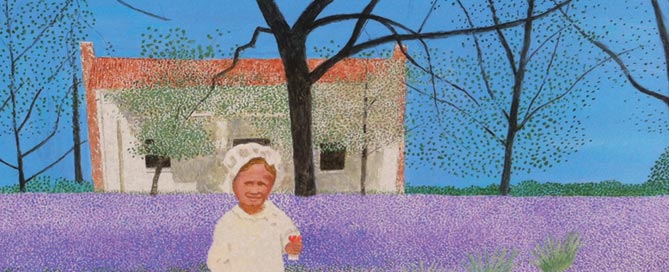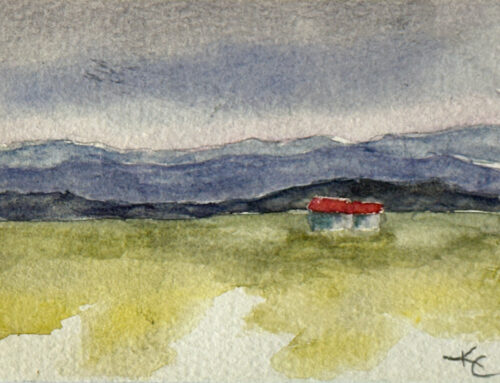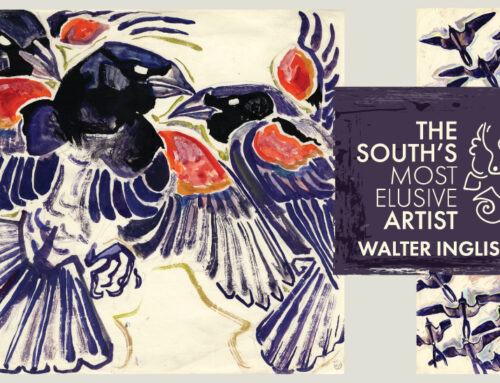It began as a vision of the possible for Gay Bechtelheimer, current chair of the Arkansas Arts Council. Her dream, to bring an exhibition of Arkansas artist Carroll Cloar to the South Arkansas Arts Council, a journey that would span many years.
On November 7, that vision will become a reality as the new exhibition, Carroll Cloar’s Arkansas, opens in the Merkle and Price Galleries. The exhibition, curated by Bechetelheimer and Greg Thompson, executive director of Greg Thompson Fine Art in North Little Rock, is sponsored by Martha Murphy in honor of her mother, Johnie Walker Murphy.
Carroll Cloar’s Arkansas will be on display November 7 through December 19, 9am-5pm, Monday-Friday, with special weekend hours Saturdays 11am-4pm and Sundays 1-4pm beginning November 15. The exhibition is free and open to the public.
Recently, Bechtelheimer spoke of her journey to make this fitting finale to SAAC’s 50th Anniversary Celebration possible.
“I was in the gallery of SAAC, maybe in the late 80’s, before the new gallery was built. I don’t remember what the show was, but there were Carroll Cloar paintings in that exhibit. I remember walking by and looking at them and thinking ‘That’s kind of quaint. It looks like something from Arkansas.’ I turned around went back and looked again, because there was something about those paintings. They had a power that brought me back. They weren’t particularly colorful, but there was a psychological narrative power that was arresting. I went back and thought ‘Who is this Carroll Cloar?’ I knew he was from eastern Arkansas, but I always thought it was near the Pine Bluff area. It wasn’t until later that I found out he was from Earle.
“When I became a member of the Arkansas Arts Council, one day the MidAmerica Arts Alliance had a flyer out advertising that they were having a small, traveling show of Carroll Cloar’s work, and I thought ‘Carroll Cloar? That’s that artist from Arkansas.’ The more I read, the more fascinated I became. I just wasn’t as familiar with his works as I should have been. So when I saw that flyer, I thought, ‘I need to get this show to El Dorado.’
“So I pursued it, and I remember talking to Jack early on about it, and we figured out a way to make it happen. I went back to MidAmerica, but the show had closed, and I couldn’t get it to the Arts Center. I spoke to Joy Pennington at the Department of Arkansas Heritage, and she referred me to Deborah Ferguson, who has a very nice collection of Carroll Cloar’s work.
“The wheels started turning then, and I thought ‘I need to get busy. I need to see what I can do.’ Suddenly all the planets aligned. We had the 50th anniversary coming up. I talked with Amelia Barton, the Executive Director of the Delta Fine Arts and Cultural Center, Inc., before I even had a patron, and she told me we could make this happen. She spoke with the Fergusons, and she told me they said yes. Then, due to everyone’s busy schedules, it just seemed to stall for months, and I had all but given up. We were not getting anywhere, and we were already in meetings planning for the 50th, when out of the blue I got a text from Deborah asking when I wanted those paintings. That is when things went into high gear, and I knew that we would be able to get Carroll Cloar into our gallery. It was last May that Madison Murphy, who is very interested in this show , told me about Greg Thompson, who has a gallery in North Little Rock and has Carroll Cloar’s work. Madison set up a phone meeting with Greg for me, and Greg suggested we meet. I was in Little Rock for an Arts Council meeting, and I stopped by his gallery; he was sitting there with his pen and paper, and he said, ’I want to help you curate this show.’
“Greg introduced me to contacts. I went to the University of Memphis. I met with Dr. Stanton Thomas at the Brooks Museum, who gave me guidance on transportation and insurance of the works, and how to find other work as well.
“The majority of the drawings for this exhibit come the University of Memphis, from their Carroll Cloar collection archives. We also have drawings from the Fergusons and the McCains and the Historic Arkansas Museum, who were incredibly gracious, as well as other individuals.
“So the planets aligned, and it worked out perfectly. I think we have a great, wonderful gallery for mounting special, unique shows that are powerful, that can inspire. This is regional art with an internationally recognized artist. This is Arkansas’ artist. He is becoming increasingly known throughout the world, and I don’t know how long we’re going to be able to do something like this, to bring his work to the area. This exhibition is a touchstone. It raises the bar for us. We have learned a lot but I think it challenges us to seek to do something like this again in the future.”



